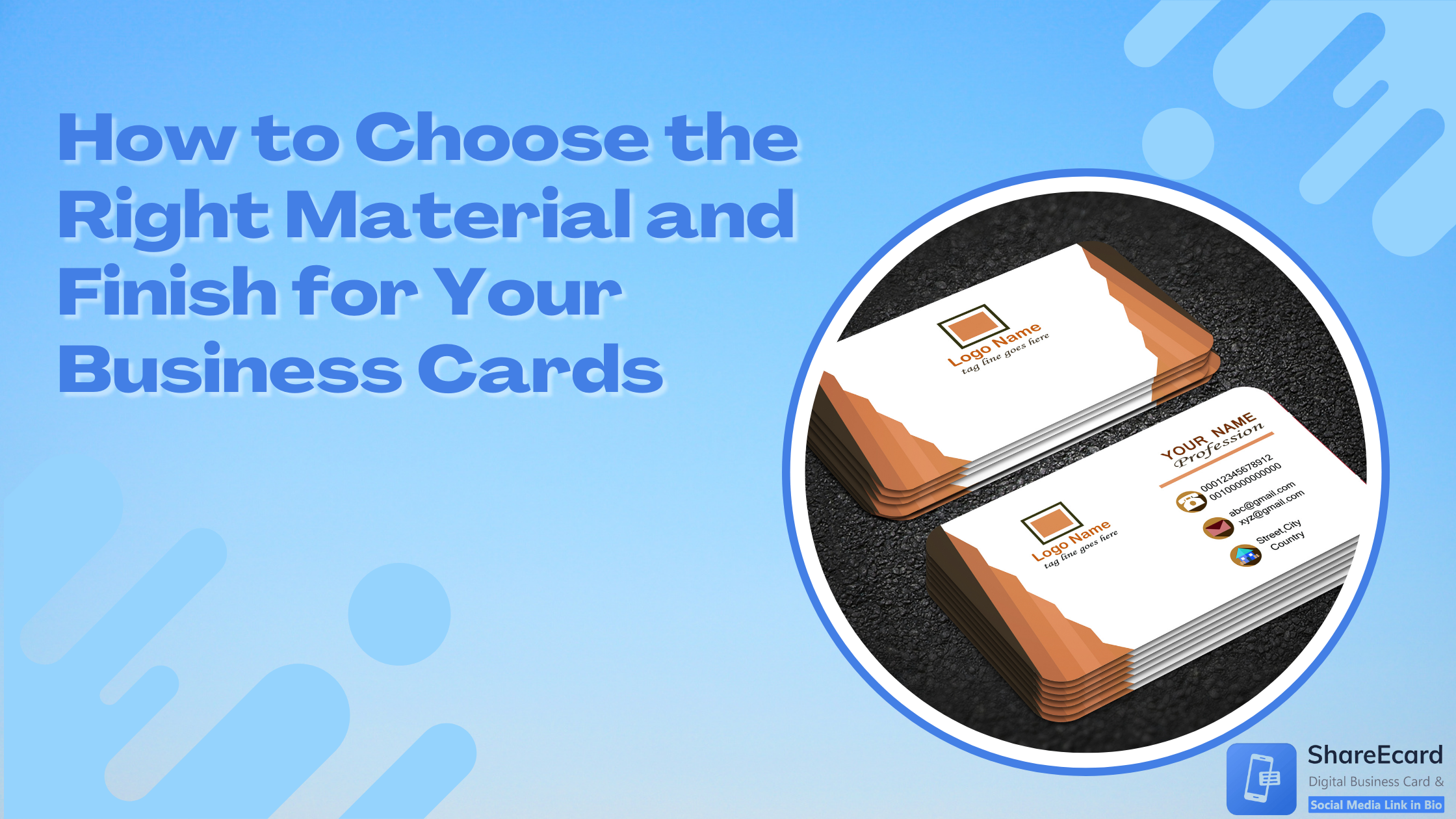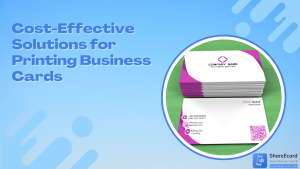Selecting the perfect material and finish for your business cards is a critical decision that can significantly impact the first impression you make. The right choice not only conveys professionalism but also reflects your brand’s personality and values. Here’s a guide to help you navigate through various options and choose the material and finish that best suits your business card needs.
Tips for Choosing the Right Material and Finish for Business Cards
Before we start with the right selection of materials, if you want to know some tips and best practices for your business card design then here’s a blog to guide you to the perfect design for your business card.
Understanding Different Materials
- Standard Cardstock: The most common and cost-effective option. It’s versatile and works well for a wide range of designs. Ideal for those who prefer a traditional look.
- Premium Cardstock: Thicker and more durable than standard, this option gives a more upscale feel. It’s suitable for businesses wanting to convey a sense of quality and substance.
- Plastic Cards: Offering durability and a modern look, plastic cards are great for businesses that want to stand out. They are water-resistant and long-lasting.
- Metal Cards: For the ultimate premium feel, metal business cards are unmatched. They are perfect for high-end businesses looking to make a bold statement.
- Recycled Materials: Eco-friendly cards made from recycled materials are excellent for brands committed to sustainability. They send a positive message about your brand’s environmental consciousness.
- Textured Cardstock: Provides a tactile experience that can make your card more memorable. It’s perfect for adding a unique touch to your design.
Choosing the Right Finish
- Matte Finish: Offers a smooth, non-glossy surface. It’s easy to write on, making it a practical choice for appointment cards or note cards.
- Glossy Finish: High sheen finish that makes colors pop and images stand out. Ideal for cards with photo images or vibrant colors.
- UV Coating: Adds a layer of shine and durability. It’s a great choice for a high-end look and for added protection against wear and tear.
- Embossing or Debossing: Creates a raised or indented effect on the card. It adds a level of sophistication and is ideal for making logos or names stand out.
- Foil Stamping: Metallic foil is applied to parts of your design for a shiny, eye-catching effect. Perfect for adding a luxurious touch.
- Spot UV: A method where only certain areas of the card are coated with UV to create a contrast of textures. It’s excellent for highlighting specific elements of your design.
Considerations for Your Choice
- Brand Identity: Ensure your choice aligns with your brand’s image and values. A tech company might go for a sleek, modern plastic card, while a craft business might prefer recycled paper.
- Budget: Costs vary significantly among different materials and finishes. Balance your desire for quality with your available budget.
- Practicality: Consider how the card will be used. If you need to write on them often, a matte finish might be more suitable than glossy.
- Audience: Think about the preferences of your target audience. A luxury brand’s audience might appreciate a metal card more than a casual startup’s audience.
The material and finish of your business card can speak volumes about your brand and professionalism. By considering factors like brand identity, budget, practicality, and audience preferences, you can choose the right combination that not only reflects your business’s character but also leaves a lasting impression on your recipients. Remember, your business card is a small canvas that represents your professional image – make every inch count!
If you are looking for an alternative of paper business cards and don’t want to worry much about finish of paper business cards then you can create a free digital business card from ShareEcard.




